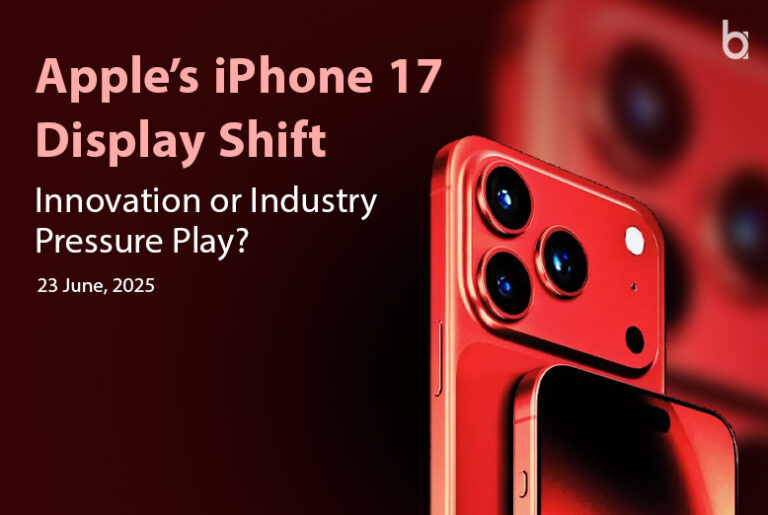Business APAC
June 23rd, 2025
A strategic tremor is running through the global electronics supply chain, and it’s emanating from Apple. The company is reportedly gearing up to make 120Hz high-refresh-rate screens a standard feature across its entire iPhone 17 lineup in 2025. For years, the “ProMotion” technology has been a key perk for buyers of Apple’s most expensive models. Bringing it to every new iPhone is far more than a simple feature handout; it’s a calculated move designed to reshape Apple’s relationship with its suppliers and solidify its control over the display market.
The decision effectively turns a premium, difficult-to-produce component into a commodity. It ignites an enormous demand for advanced Low-Temperature Polycrystalline Oxide (LTPO) OLED panels, the technology that allows for silky-smooth scrolling without killing battery life. Now, the burden shifts to manufacturing partners like Samsung Display, LG Display, and China’s BOE, who face the daunting task of producing these complex screens by the tens of millions, all at a price point Apple dictates.
Balancing Scale and Cost in Manufacturing
Making an LTPO panel is a far more complex and delicate process than manufacturing the standard LTPS screens found in today’s base-model iPhones. The extra steps involved in production have historically resulted in lower yields, meaning a higher percentage of panels get discarded for defects. For suppliers, this is a critical economic balancing act.
“To scale LTPO production for a device family that sells over 150 million units is a colossal undertaking,” explains a display technology analyst. “The entire game is about keeping yields high to manage costs. Even a tiny dip in that yield rate can erase millions of dollars in profit for a supplier.” This part of the iPhone 17 display strategy throws down a manufacturing gauntlet, forcing suppliers into a high-stakes race to perfect their production lines.
The display race: who won, who lost?
This calculated market shift creates a volatile arena where fortunes could be made or lost.
- Samsung Display, as the established leader in high-end OLED production, is the default frontrunner for the bulk of the orders. But as part of Apple’s diversified sourcing plan, it will face relentless price pressure and be held to flawless quality standards across an unprecedented volume.
- For China’s ambitious BOE, this is a make-or-break moment. The company has been fighting for a larger piece of Apple’s business but has faced challenges meeting the exacting quality and yield demands for LTPO. “If BOE can meet Apple’s volume and quality targets for LTPO, it would be a landmark achievement,” notes a supply chain expert. “But if they can’t get the yields right, the financial penalty will be severe.” The competitive pressure from the iPhone 17 display strategy will be intense.
- LG Display remains a key player in Apple’s strategy to avoid over-reliance on a single source. The company will have to ramp up its investment in LTPO capacity to secure a significant portion of the orders and cement its position as a viable top-tier partner.
Apple’s Approach to Market Domination
This strategy is about more than just what customers see on screen; it’s a textbook lesson in supply chain leverage. By generating a predictable, massive demand for one specific high-end component, Apple pits its suppliers against each other in a fierce battle for its business. That intense competition inevitably pushes down component costs over time, handing Apple immense bargaining power.
This long-term approach is the quiet genius behind the iPhone 17 display strategy. Apple isn’t just a customer buying screens; it is actively molding the market to its own design. By standardizing LTPO, Apple essentially forces its partners to pour billions into building production lines tailored to its exact specifications. This deepens their financial dependence on the iPhone maker, ensuring Apple gets what it wants: favorable prices, guaranteed supply, and firm control over a vital segment of the smartphone industry.
Looking ahead, the downstream effects will be widespread. If Apple’s gambit succeeds, it won’t just reshape its supply chain; it will accelerate the move toward high-refresh-rate displays across the entire smartphone industry, quickly making 60Hz screens look dated on any device. For Apple, the move both strengthens its product lineup and reinforces its market power. It’s a move that proves, once again, that even when Apple appears to give a premium feature away, the house always wins.
Also Read: 16 Billion Logins Leaked: The Largest Data Breach Ever Resurfaces



